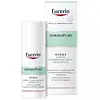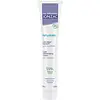What's inside
What's inside
 Key Ingredients
Key Ingredients

 Benefits
Benefits

 Concerns
Concerns

 Ingredients Side-by-side
Ingredients Side-by-side

Water
Skin ConditioningGlycerin
HumectantPanthenol
Skin ConditioningIsopropyl Palmitate
EmollientSqualane
EmollientTapioca Starch
Glyceryl Stearate Citrate
EmollientBehenyl Alcohol
EmollientCetyl Alcohol
EmollientHydrogenated Coco-Glycerides
EmollientGlycyrrhiza Inflata Root Extract
Skin ConditioningCeramide NP
Skin Conditioning4-T-Butylcyclohexanol
MaskingDimethicone
EmollientPentylene Glycol
Skin ConditioningCarbomer
Emulsion StabilisingTrisodium EDTA
Sodium Hydroxide
BufferingPhenoxyethanol
PreservativeWater, Glycerin, Panthenol, Isopropyl Palmitate, Squalane, Tapioca Starch, Glyceryl Stearate Citrate, Behenyl Alcohol, Cetyl Alcohol, Hydrogenated Coco-Glycerides, Glycyrrhiza Inflata Root Extract, Ceramide NP, 4-T-Butylcyclohexanol, Dimethicone, Pentylene Glycol, Carbomer, Trisodium EDTA, Sodium Hydroxide, Phenoxyethanol
Water
Skin ConditioningAnthemis Nobilis Flower Water
MaskingHamamelis Virginiana Water
AstringentMalva Sylvestris Extract
AstringentDicaprylyl Carbonate
EmollientGlycerin
HumectantCaprylic/Capric Triglyceride
MaskingCoco-Caprylate/Caprate
EmollientCetearyl Alcohol
EmollientArachidyl Glucoside
EmulsifyingBentonite
AbsorbentArachidyl Alcohol
EmollientSodium Levulinate
Skin ConditioningGlyceryl Stearate Citrate
EmollientParfum
MaskingSodium Stearoyl Glutamate
CleansingCetearyl Glucoside
EmulsifyingBehenyl Alcohol
EmollientXanthan Gum
EmulsifyingSodium Benzoate
MaskingGlyceryl Caprylate
EmollientGlyceryl Undecylenate
EmollientPhytic Acid
Lactic Acid
BufferingTocopherol
AntioxidantHelianthus Annuus Seed Oil
EmollientSodium Hydroxide
BufferingGlycine Soja Oil
EmollientWater, Anthemis Nobilis Flower Water, Hamamelis Virginiana Water, Malva Sylvestris Extract, Dicaprylyl Carbonate, Glycerin, Caprylic/Capric Triglyceride, Coco-Caprylate/Caprate, Cetearyl Alcohol, Arachidyl Glucoside, Bentonite, Arachidyl Alcohol, Sodium Levulinate, Glyceryl Stearate Citrate, Parfum, Sodium Stearoyl Glutamate, Cetearyl Glucoside, Behenyl Alcohol, Xanthan Gum, Sodium Benzoate, Glyceryl Caprylate, Glyceryl Undecylenate, Phytic Acid, Lactic Acid, Tocopherol, Helianthus Annuus Seed Oil, Sodium Hydroxide, Glycine Soja Oil
Ingredients Explained
These ingredients are found in both products.
Ingredients higher up in an ingredient list are typically present in a larger amount.
Behenyl Alcohol is a type of fatty alcohol (these are different from the drying, solvent alcohols).
Fatty Alcohols have hydrating properties and are most often used as an emollient or to thicken a product. They are usually derived from natural fats and oils; behenyl alcohol is derived from the fats of vegetable oils.
Emollients help keep your skin soft and hydrated by creating a film that traps moisture in.
In 2000, Behenyl Alcohol was approved by the US as medicine to reduce the duration of cold sores.
Learn more about Behenyl AlcoholGlycerin is already naturally found in your skin. It helps moisturize and protect your skin.
A study from 2016 found glycerin to be more effective as a humectant than AHAs and hyaluronic acid.
As a humectant, it helps the skin stay hydrated by pulling moisture to your skin. The low molecular weight of glycerin allows it to pull moisture into the deeper layers of your skin.
Hydrated skin improves your skin barrier; Your skin barrier helps protect against irritants and bacteria.
Glycerin has also been found to have antimicrobial and antiviral properties. Due to these properties, glycerin is often used in wound and burn treatments.
In cosmetics, glycerin is usually derived from plants such as soybean or palm. However, it can also be sourced from animals, such as tallow or animal fat.
This ingredient is organic, colorless, odorless, and non-toxic.
Glycerin is the name for this ingredient in American English. British English uses Glycerol/Glycerine.
Learn more about GlycerinGlyceryl Stearate Citrate is a citric acid ester of glyceryl stearate.
It is an emulsifier, emollient, and a surfactant.
Emulsifiers help stabilize a product. It does this by preventing certain ingredients from separating. Common ingredients include oils and water, which do not mix naturally. Emulsifiers have properties that help keep ingredients such as these together.
Emollients help soothe and soften the skin. They do this by creating a protective film on your skin. This barrier helps trap moisture and keeps your skin hydrated. Emollients may be effective at treating dry or itchy skin.
Surfactants help gather oils, dirt, and other pollutants from the skin. This helps them to be easily rinsed away.
Learn more about Glyceryl Stearate CitrateSodium Hydroxide is also known as lye or caustic soda. It is used to adjust the pH of products; many ingredients require a specific pH to be effective.
In small amounts, sodium hydroxide is considered safe to use. However, large amounts may cause chemical burns due to its high alkaline.
Your skin has a natural pH and acid mantle. This acid mantle helps prevent harmful bacteria from breaking through. The acid mantle also helps keep your skin hydrated.
"Alkaline" refers to a high pH level. A low pH level would be considered acidic.
Learn more about Sodium HydroxideWater. It's the most common cosmetic ingredient of all. You'll usually see it at the top of ingredient lists, meaning that it makes up the largest part of the product.
So why is it so popular? Water most often acts as a solvent - this means that it helps dissolve other ingredients into the formulation.
You'll also recognize water as that liquid we all need to stay alive. If you see this, drink a glass of water. Stay hydrated!
Learn more about Water